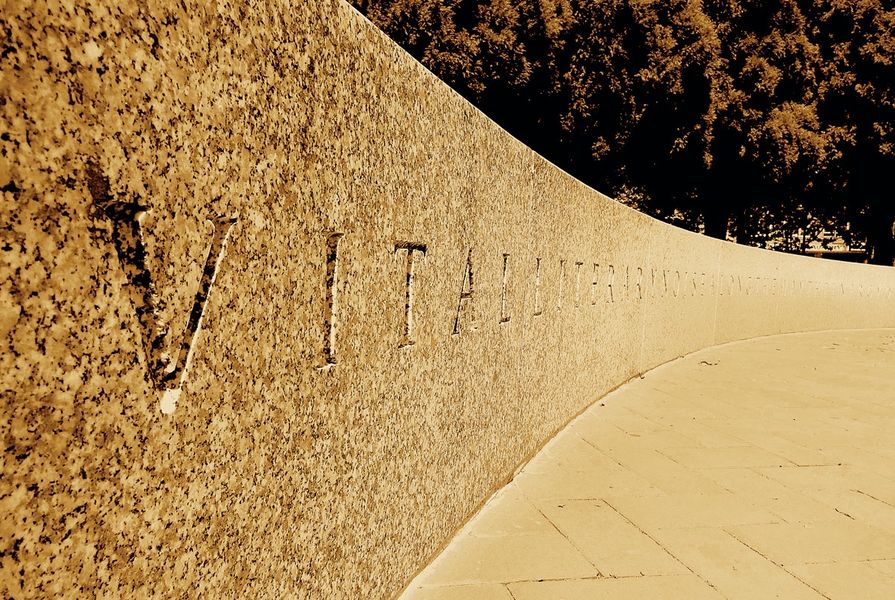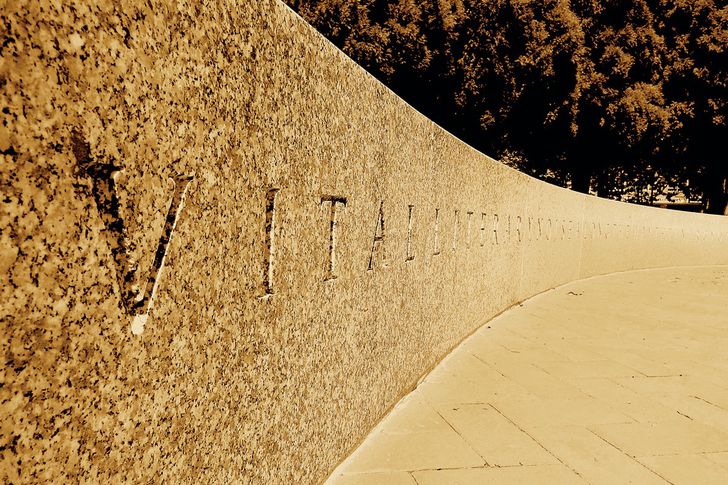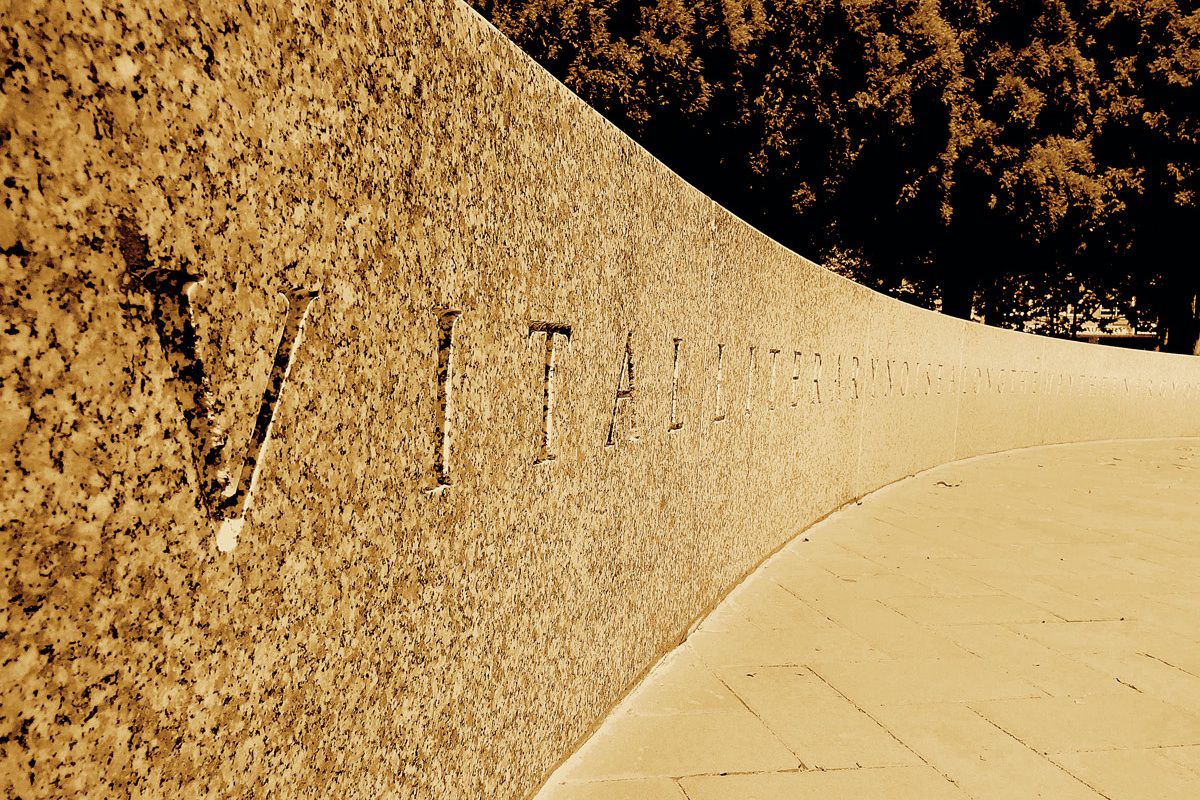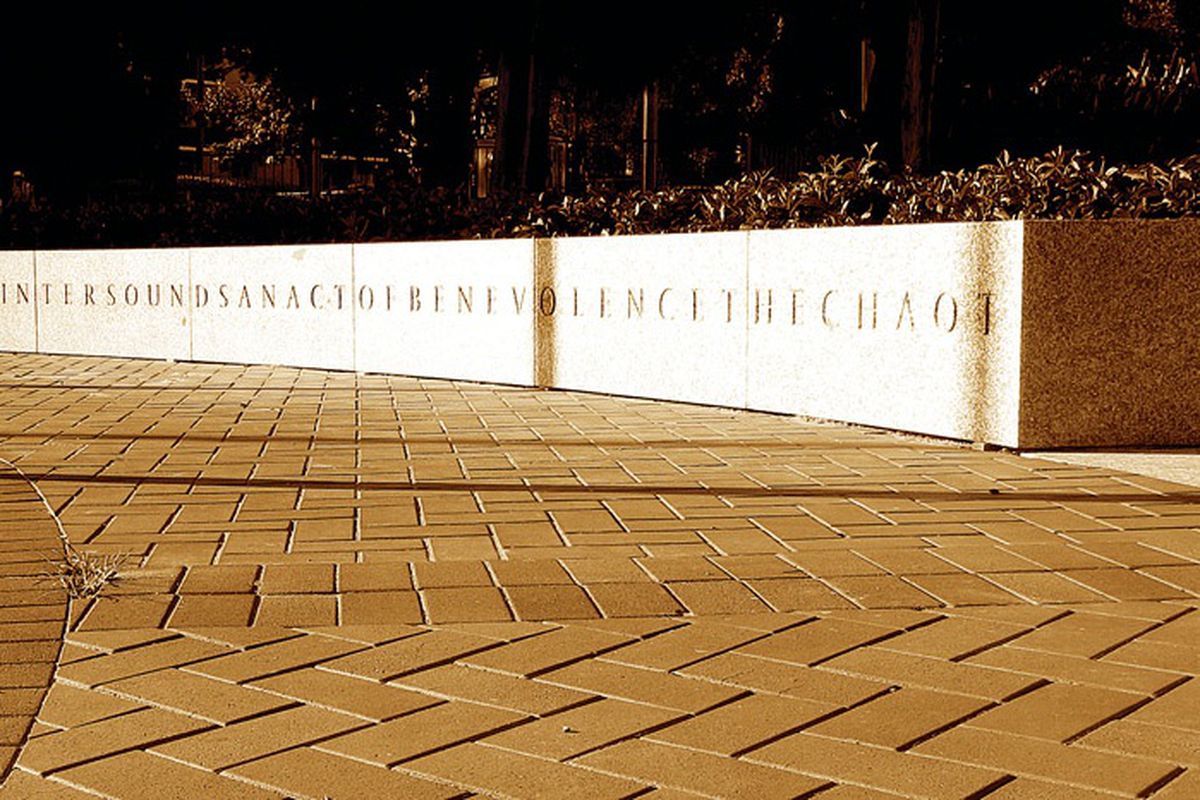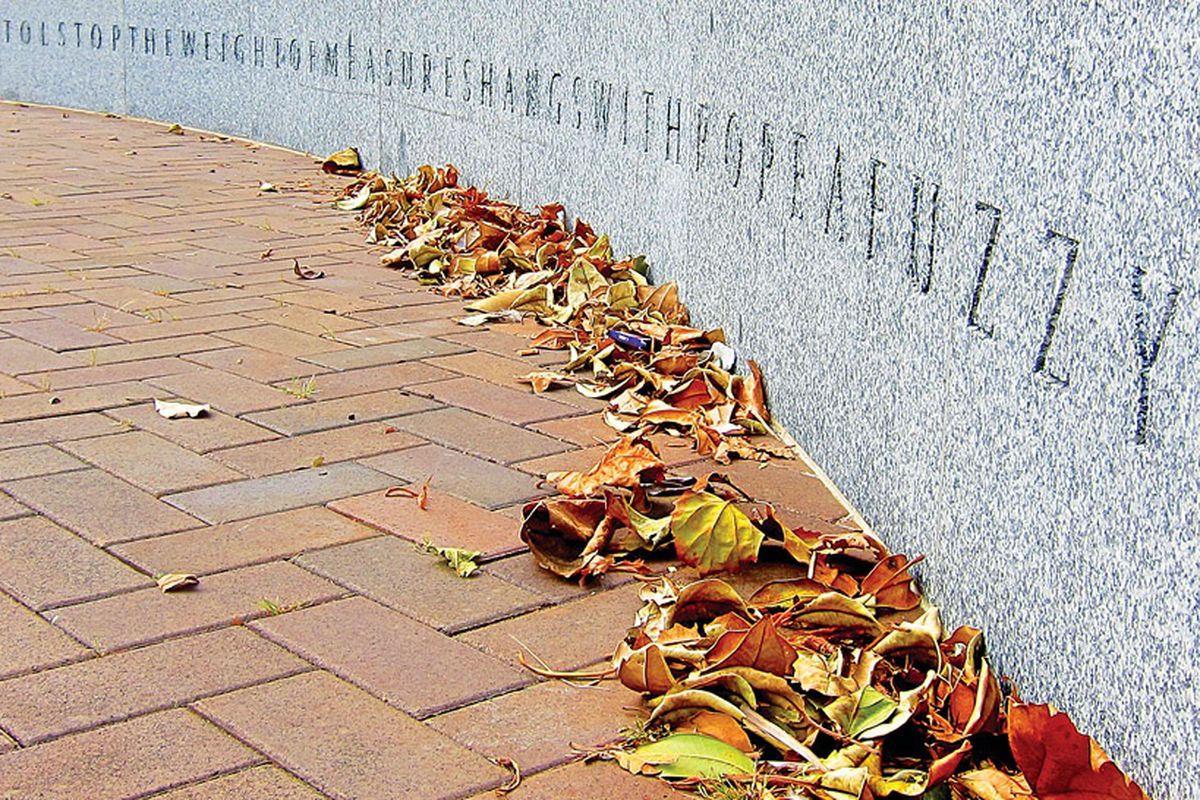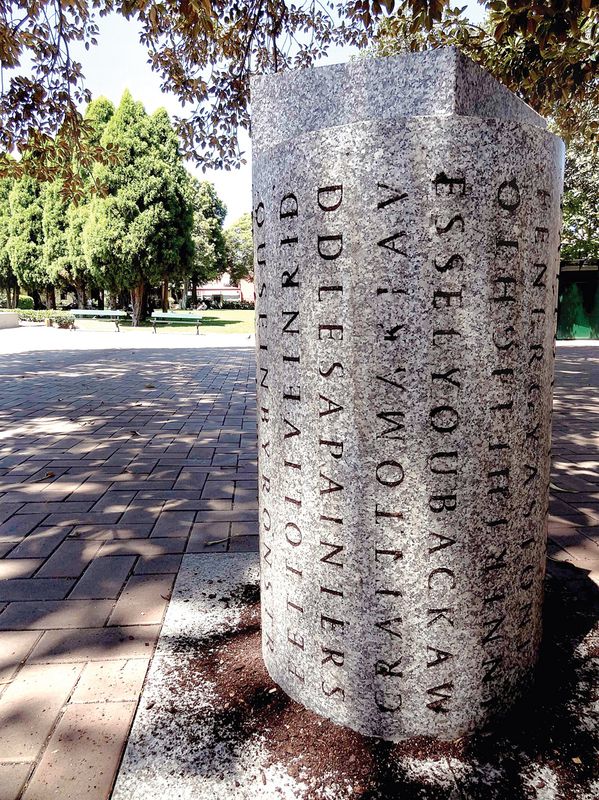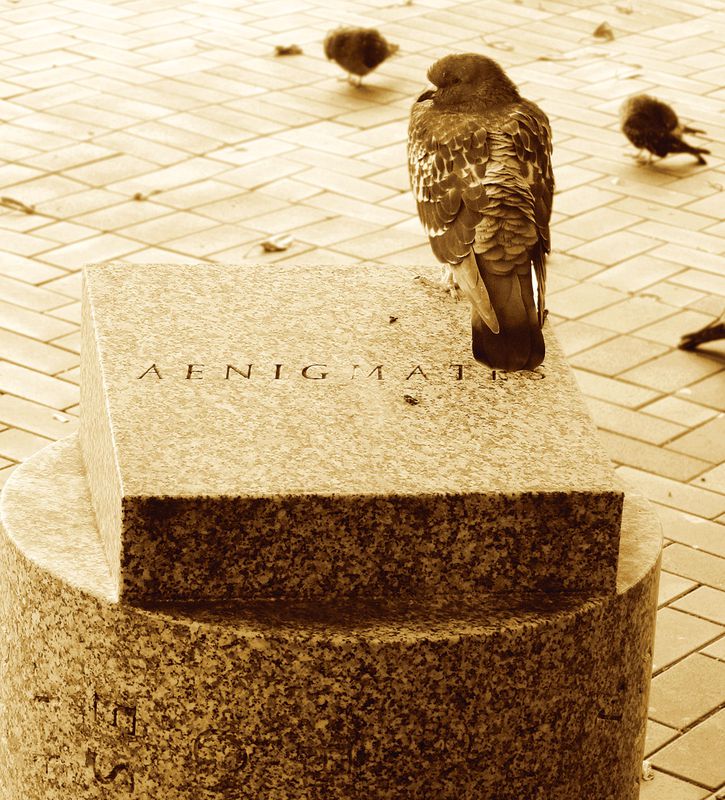Recently, residents of the eastern Sydney suburb of Randwick may have encountered a new semicircular stone design when passing through Allison Park. The new visual pattern may strike those rushing to catch a bus or strolling quietly by. Some may linger, perhaps taking advantage of the seating offered by the structure, and notice an uninterrupted line of letters engraved into the surface. Looking closer, they might then catch glimpses of lines, words or phrases, such as “animal tracks amount to travel” and “to live in history.”
The public artwork – Residence – was recently completed by artist and writer Ruark Lewis in collaboration with landscape architecture firm Terragram. In 2009, Lewis was commissioned by Randwick City Council to commemorate its sesquicentenary by creating a public artwork that represented the broad ambit of the suburb’s history of European settlement and its connection with the local Indigenous community. To assist with the realization, Lewis turned to Terragram. Having previously worked with the company’s founder, Vladimir Sitta, he was aware of the firm’s vision – design that integrates creative expression.
Lewis and Terragram wanted to create an open urban meeting ground that would evoke the ancient Greek agora. Operating within a modest budget, they devised a simple design of classical proportions at the southern end of Allison Park: two semicircular benches carved from granite, each twenty metres in length, in which Lewis’s text would be horizontally engraved, effectively surrounding the visitor. Some ten metres beyond, a granite lectern was to be erected, on which the text would continue on a smaller scale, this time running vertically up and down the column before ending with an ellipsis. The final touch to the plans came during construction – the aptly descriptive Latin word “aenigmates” was engraved on the lectern’s slanted reading desk.
After working for over two decades, Lewis has established an international reputation across an extraordinary range of creative genres. Although Residence is only the second permanent public work to bear his imprint, it reflects his mature style – striking visual arrangements of esoteric texts stencilled onto a variety of surfaces. His first piece was Relay (1999), designed collaboratively with the writer-artist Professor Paul Carter and Hargreaves Associates, for the Sydney Olympics. In this work, an extended colour-coded lettering system was sandblasted into granite steps near Homebush Stadium.
Chosen for the text was the serif font Capitolium News by Dutch typographer Gerard Unger.
Image: Vladimir Sitta
Residence is a civic poem, but differs in its design principles. The lettering has been engraved some eight millimetres into the stone, creating a shadow-text. Lewis was sensitive to the challenges of longevity, having found, through his experience with Relay, that painted primary colours were not necessarily conducive to effective maintenance. Deep engraving rather than surface sandblasting similarly reduces deterioration, thus minimizing costs. Selection of an appropriate serif font was crucial to conveying the civic spirit as well as helping to prevent water accumulating around the lettering. The team selected Capitolium News, a public typeface designed by the Dutch typographer Gerard Unger. Residence marks the first appearance of Unger’s font in the Australian public domain.
While the site is now open for all to visit, it should be noted that it does not entirely conform to the team’s original vision. Encounters with the artwork are hampered by a cluttering of municipal flags, while a council bin remains adjacent to one of the walls, spoiling the intended symmetry. Despite these annoyances, a nuanced awareness of the space’s collective uses lies in the simple structure and defined text. Speakers addressing their audience can find comfort in the shade offered by the fig tree next to the lectern. When facing those gathered around the walls, their field of vision will register the flickering of letters. Audiences will experience something similar – when staring at those behind the lectern they will also observe a pattern quietly shadow-dancing.
The distracting effect of the lettering recalls the mischievousness of graffiti, signalling that the purpose of Residence is not simply functional. If the shadow-text imparts a double meaning, how should we understand this counterpoint? One approach might be to focus on the phrases. These are self-styled aphorisms written by Lewis in a state of purposeful meditation after he immersed himself in essays and interviews with the community. Among those interviewed were members of the Aboriginal community, whose histories of exchange with South Coast Aboriginal communities are traced in such phrases as “a song of La Perouse” and the poignantly suggestive “without monument or statue.”
One of the first suburbs of colonial Australia, Randwick carries its own recognizable monuments – “you back a winner” directs us to the racecourse. There are also secretive phrases that reflect the artist’s own past – “a darkened house in Byron Street” refers to Lewis’s grandfather’s Randwick home, built in the mid-nineteenth century for the composer Isaac Nathan.
Lewis’s lettering is engraved 8 mm into the granite benches.
Image: Kate Croll
However, interpreting the text based on the words alone runs the risk of diminishing its true poetic modality, and this is comically suggested through the destabilizing experience one is likely to have when reading the work. Misunderstandings, mistakes and confusion prevail, partly because it is impossible to scan the lines cogently. When phrases become legible, their aphoristic import only deepens the uncertainty.
This off-kilter reading experience is integral to the work’s meaning. Far from a list of quotations rationally appropriated from primary sources, the aphorisms document the oneiric (dream-related) history and ephemeral presence of others that were manifest to Lewis while he was in what philosopher Gaston Bachelard would term a poetic state of reverie. The text lies somewhere between sense and nonsense because its words have passed from one language to another through the dream-like consciousness that directed Lewis’s transcription.
The underlying philosophical poetics of Residence owes something to the writer Nathalie Sarraute, who through her carefully crafted prose archived the sharp, brief sensations that “slip through us on the frontiers of consciousness.” Any attempt to decipher the referents behind the civic poem will induce a similar kind of slippage. Like a mirror engraved in stone letters, its surface reflects the community’s shadows, rendered through the mediating power of poetic intelligence.
Credits
- Project
- Residence: a public artwork in Randwick
- Artist
-
Ruark Lewis
- Architect
- Terragram
Surry Hills, Sydney, NSW, Australia
- Site Details
-
Site type
Urban
- Project Details
-
Status
Built
Category Landscape / urban
Type Public / civic
Source
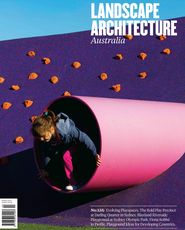
Review
Published online: 3 May 2016
Words:
James Paull
Images:
Kate Croll,
Vladimir Sitta
Issue
Landscape Architecture Australia, August 2012

